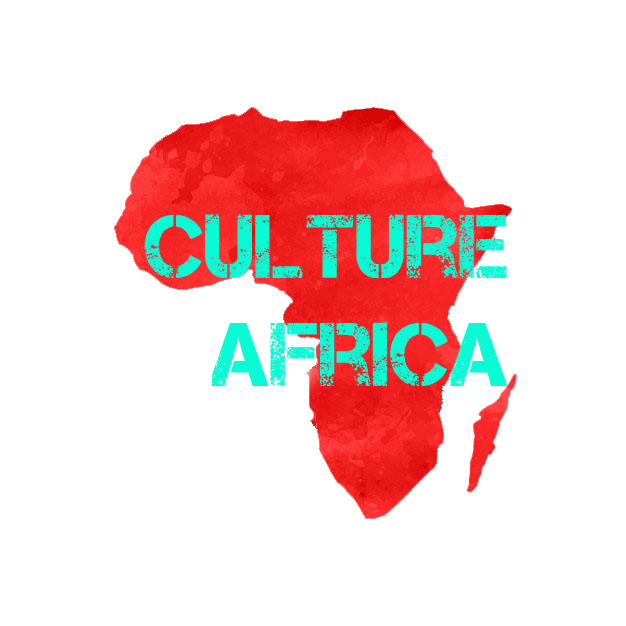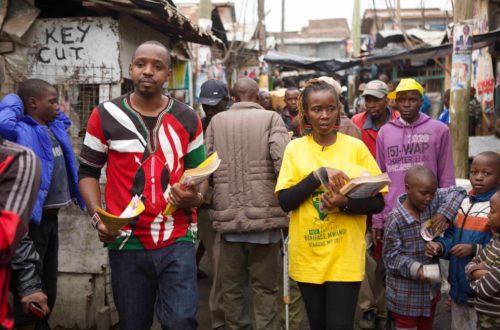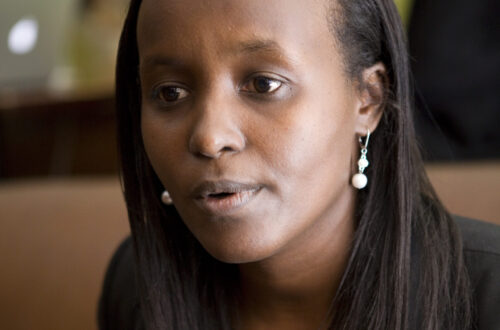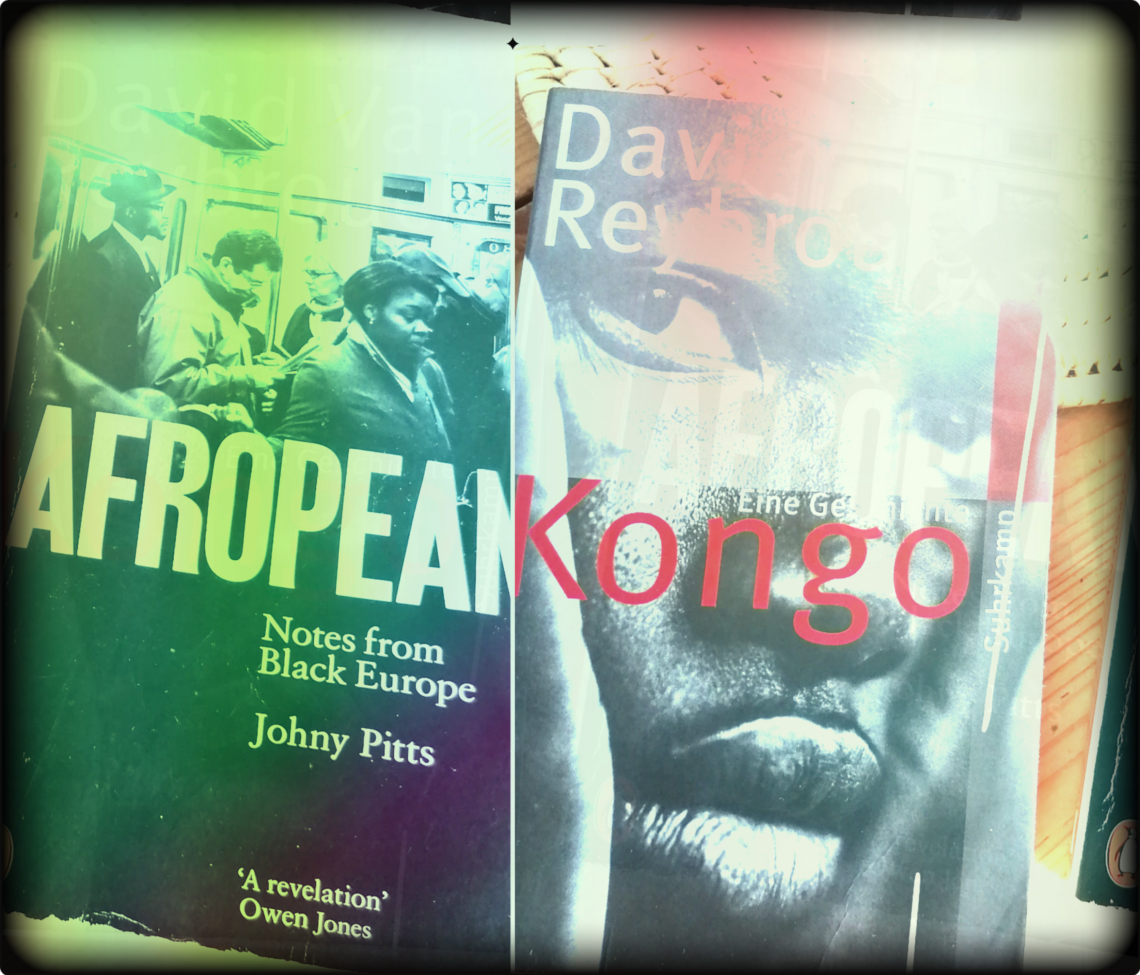
Afropean und Kongo – Johnny Pitts and David van Reybrouck – Brothers in Soul – ger/engl
Am 26. Mai bekommt Johny Pitts für sein Werk “Afropean” den “Leipziger Buchpreis zur Europäischen Verständigung”. For English version please scroll down Zurecht. Es ist ein großartiges Werk, das ich hier beleuchten möchte. Damit es nicht so einsam um dieses Buch wird, habe ich noch einen Gast eingeladen, der auf den ersten Blick nichts mit “Afropean” gemein hat: “Kongo” des Belgiers David van Reybrouck. “Afropean” erschien letztes Jahr auf Deutsch und ist ein erfolgreiches Buch geworden. Immerhin das hat “Kongo. Eine Geschichte” vor zehn Jahren auch geschafft: ein sehr erfolgreiches Geschichtsbuch über ein afrikanisches Land, das vom Feuilleton als “Meilenstein der Geschichtsscheibung”, der Spiegel gar als “Jahrhundertbuch” gefeiert wurde und in der vierten Auflage verkauft wird. Afropean ist kein Geschichtsbuch, Johny Pitts ist Essayist, kein Historiker. Dennoch hat er mit diesem Buch ein Thema populär gemacht, das zwar irgendwie virulent in den letzten Jahren wahr, aber nicht genau gefasst wurde.
von Hans Hofele

Eine Kulturgeschichte der Schwarzen in Europa oder auch der Einfluß der afro-europäischen Kultur und ihrer ProtagonistInnen. Das ist alles plötzlich sehr aktuell in Europa. Was das Buch mit “Kongo” gemein hat, ist die Machart. Geschichte erzählen, indem sich der Autor auf die Reise zu den Schauplätzen macht, Menschen trifft, Gespräche führt. Der Alltag ist nicht nur Anekdote, er hat sozialgeschichtlichen Wert.
Die Reise wird dann aber auch auf eine weitere Ebene gehoben, den wissenschaftlichen Diskurs, die wissenschaftliche bzw. journalistische Einordnung. Dies macht die beiden Bücher zwar nicht ganz so einfach zu lesen, bietet damit aber auch einen tiefen Einblick in die Sujets. Während van Reybrouck eine komplette historische Zeitspanne von Mitte des 19. Jahrhunderts bis heute abbildet, streift Johny Pitts durch die Zeit ohen Anspruch auf eine Chronologie. Alexandre Dumas und Leo Tolstoi hatten dunklhäutige Vorfahren, aber was hat ein niederländisch-guyanesischer New York Einwanderer mit Europa zu tun? Wo kreuzen sich die Blutherrschafft des König Leopold II. im Kongo und das Blau des Meeres der Côte d’Azur? Es gibt sie, die direkten Überkreuzungen der beiden Bücher. Der Belgier van Reybrouck im Kongo und der Brite Pitts in Belgien, auf den Spuren der Hinterlassenschaften der Kolonialzeit.
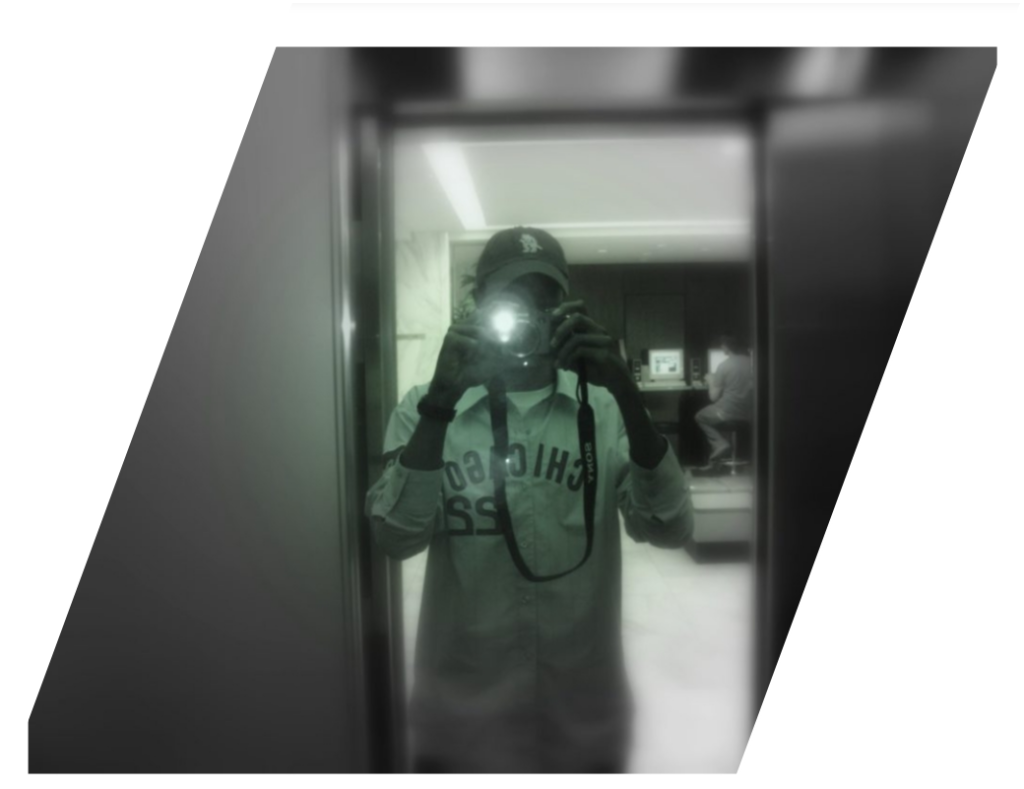
Den Begriff “Afropean” hat Pitts indes nicht selbst erfunden. Er entlehnt ihn den Musikern David Byrne und der Belgisch-Kongolesischen Künstlerin Marie Daulne, die ihn in den neunziger Jahren bekannt gemacht haben. Für ihn ist der Begriff das zutreffendste, das er gefunden hat: “It suggested the possibility of living in and with more than one idea: Africa and Europe,…without being mixed-this, half-that or black-other. That being black in Europe didn´t necessarily mean being an immigrant”. Pitts geht es nicht vornehmlich um eine Suche nach berühmten Vorfahren. Sein Interesse gilt auch den ganz einfachen Menschen. Wie kommen sie zurecht, was trennt oder verbindet sie mit den überwiegend weißen Einwohnern der Städte?
Die Autoren
Johny Pitts stammt aus Sheffield im Norden Englands. Er ist Sohn einer weißen Arbeiterin und eines New Yorker Musikers. Er arbeitet als Essayist, Schriftsteller und Fotograf. Seine Herkunft aus der toughen Arbeitergegend FirthPark, lässt er in vielen Kapiteln immer wieder direkt einfließen. Das zeigt sich in der Empathie für die normalen Menschen, die er trifft. Das beeinflusst seine Herangehensweise an die Themen und Schauplätze seiner Reise. Pitts nennt seine Arbeitstechnik “Bricolage”, er sammelt und erzählt Geschichten aus einem Europa, das schon lange von schwarzen KünstlerInnen bereichert wurde, davon aber selten Notiz nimmt.
In der Laudatio zur Buchpreisverleihung heißt es :
“Johny Pitts ist ein Bricoleur, ein erleuchteter, menschenfreundlicher Bastler im Lévi-Strauss’schen Sinne, einer, dessen Wahrnehmung nicht von Auftrag und Ideologie geprägt ist, einer, der im besten Sinne kontinuierlich an seinem Weltbild bastelt.”
Aber er geht auch dorthin, “wo es weh tut”, in den Pariser Stadteil Clichy-Sous-Bois” zum Beispiel, das so gar nicht zum Klischeebild Paris passt. Mietet sich in günstigen Motels ein, geht in Snackbars, läuft durch die Strassen, die eher nach einem Vorort von Lagos aussehen. Nach Moskau, ins ehemalige Studentenviertel, das nicht nur an einem dunklen Wintertag eher abstoßend wirkt. Es interessieren ihn aber nicht nur die schwarzen KünstlerInnen, sondern wie ganz normale Afriopeans leben. Wie die soziale Struktur der Wohngegenden aussehen. Ob die Städte sie aufblühen, teilhaben oder nur leben lassen.
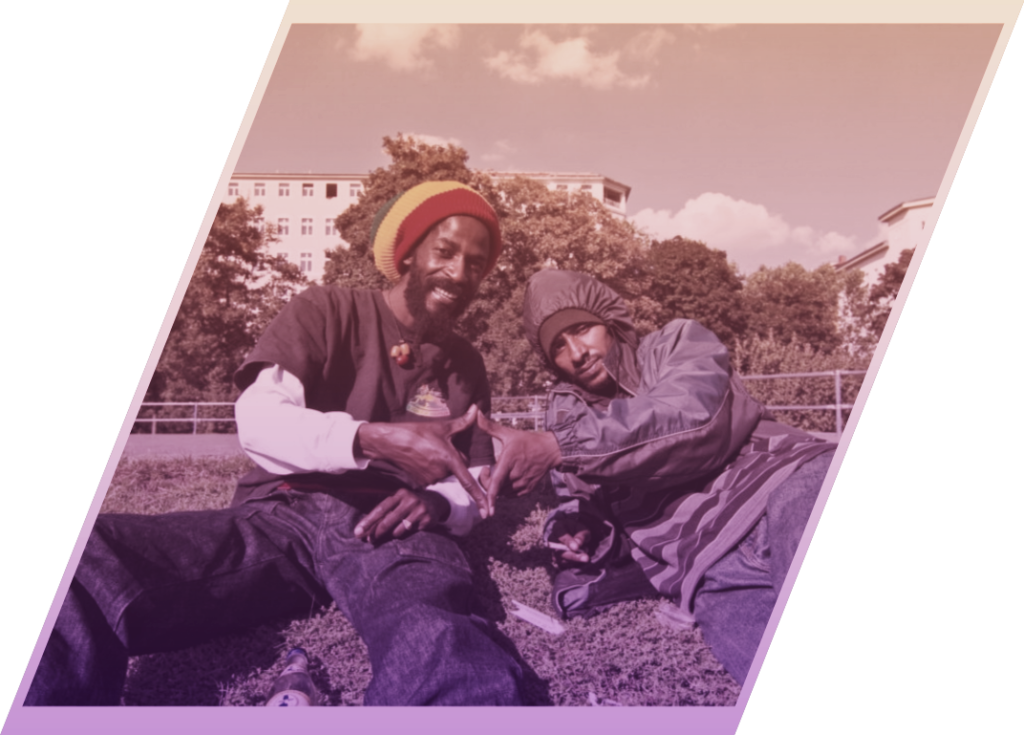
David van Reybrouck ist in Brügge geboren. Sein Vater war als Eisenbahningenieur im Kongo tätig. David studierte Geschichte und promovierte an der Universität in Leiden. Van Reybroucks erstes Buch im Jahre 2002 war De Plaag (Die Pest). Es spielt in Südafrika nach dem Ende der Apartheid und wurde in den Niederlanden und in Belgien mit mehreren Preisen ausgezeichnet. Heute organisiert Van Reybrouck in der Demokratischen Republik Kongo Workshops für kongolesische Literaten sowohl in Kinshasa als auch im Osten des Landes in Goma. 2011 wurde Van Reybrouck zum Vorsitzenden des PEN Vlaanderen gewählt.
Van Reybrouck hat mit seinem Geschichtsbuch über den Kongo der Aural History zu großem Ruhm verholfen. Denn sonst, das sagt er in dem Buch selbst, wäre ein eurozentristisches Buch entstanden:
“Um dem Eurozentrismus, der mir zweifellos imWeg stehen würde, zumindest etwas entgegenzusetzen, war es mir wichtig, systematisch auf dien Suche zu gehen nach der lokalen Perspektive, oder besser gesagt: nach den vielfältigen lokalen Perspektiven, denn selbstverständlich existiert nicht nur eine kongolesische Version der Geschichte, ebenso wenig wie es nur eine belgische, europäische oder einfach nur “weiße”Version gibt.”
Viele Stimmen sammeln im Kongo, das war das Ziel und ein erstaunliches Ergebnis.
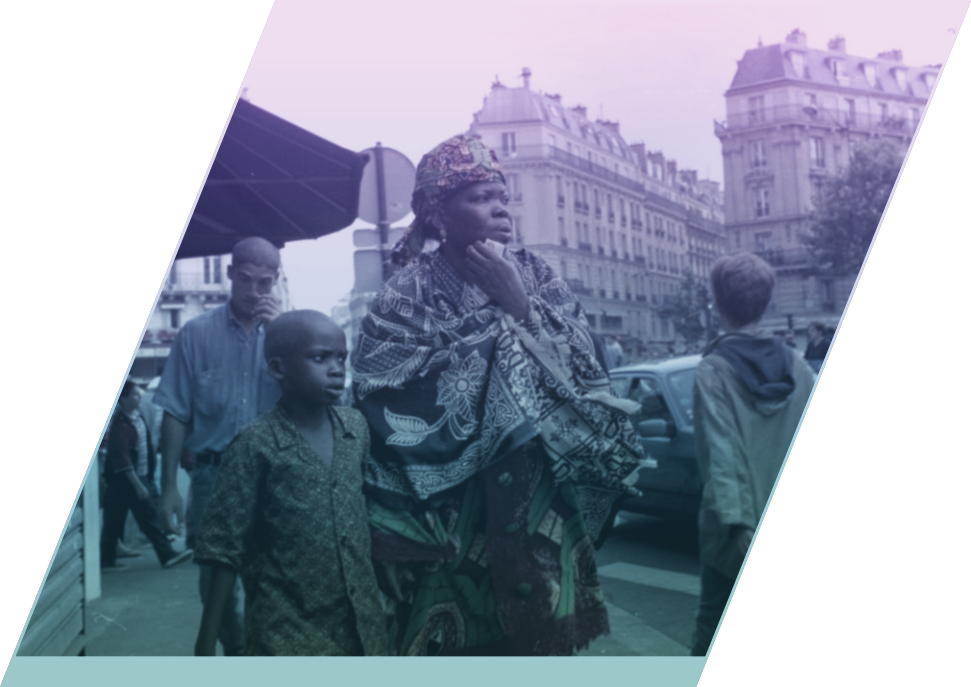
Die Reisen
Pitts sieht sich mit der Reise als Exoten. Schwarze Migrantenkinder aus der Arbeiterklasse reisen nun mal nicht. Sie sehen also gar nicht, daß Europa nicht nur weiß ist, daß sich in allen Teilen des Kontinents schwarze Brüder und Schwestern finden, daß die schwarzen Europäer eine lange Tradition haben. Auch für diese “Nicht-Reisenden”, will er den Trip machen:
“I found myself setting off as that rarest of creatures: the black backpacker.”
Von Sheffield aus fährt Pitts überwiegend mit der Bahn durch ein spätherbstliches bis winterliches Europa. Zuerst nach Paris, er nimmt an einer Stadtführung durch “Black Paris” teil, aber auch an einer Boykott-Aktion gegen das Modehaus Guerlain, dessen Besitzer rassistisch aufgetreten war. Dann der erwähnte Stadtteil Clichy-Sous-Bois. Ich nehme es vorweg, Paris kommt nicht besonders gut dabei weg. In Brüssel schaut er sich das Tervuren Museum an und ist gelinde gesagt, irritiert, wundert sich auch über die Kongo-Ausgabe im Hergé-Shop des Comic-verrückten Belgien. Trifft in Lüttich sein großes Vorbild, den britischen Journalisten und Autoren Caryl Philipps, der schon in den 80ern, ähnlich wie Pitts durchs “schwarze Europa”gereist ist.
Geschickt verknüpft er die Gespräche in weite Ausflüge durch die Zeitgeschichte. Das ist sehr erhellend, spannend, manchmal auch fordernd. Wer sich insgeheim einen Geheimtipp-Guide erhofft hatte, geht fehl. Sightseeing ist nicht angesagt, kommt nur beiläufig vor. Und wenn schon Eifelturm, dann schaut sich Johnny Pitts nicht die Lichter der Stadt von oben an sondern spricht mit den afrikanisch stämmigen Souvenirverkäufern am Fuße des Turms. In Berlin nimmt er, ganz skuril, an einer autonomen Demo teil, ist dabei, wenn man so will, der einzige Schwarze im schwarzen Block der AntiFa.
In Amsterdam zeigen sich die Folgen des Kolonialismus sehr einprägsam in den Hochhausvierteln der Stadt. Es folgen Rom, Marseille, die Côte d’Azur, Marseille, Lissabon und ganz am Schluss ein Stück Großbritannien, kurz vor Afrika; Gibraltar. Dort wollte Pitts eigentlich, am Ziel der Reise, ganz symbolträchtig den afrikanischen Kontinent erspähen, der nur 30km entfernt ist. Nebel verhinderte dieses Bild.
Doch unglücklich ist er nicht:
“…the more I realized I didn’t need to see the landmass of Africa looming emblematic in the distance to end my travels, because Africa was right where I was standing…the Afropean reality was a bricolage of blackness and I#d experienced an Africa that was both in and of Europe.”
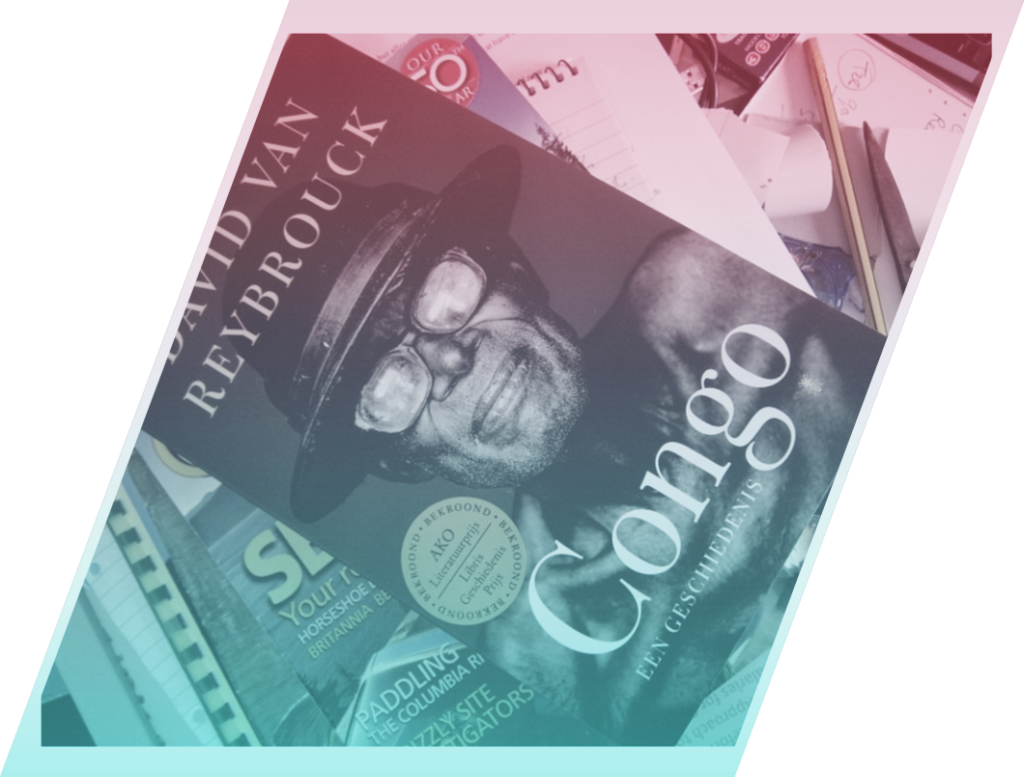
Die Reisen in den Kongo
Auch David van Reybrouck arbeitet mit großartigen Bildern. Am Anfang seines Buches beschreibt er, was Reisende, vom Meer kommend, schon hunderte Kilometer vor der Küste des Kongoflusses sehen: das Braun des Flusses ist schon lange da, bevor das Land erreicht ist. In Kinshasa findet er eines der Boote von Morton Stanley achtlos am Ufer. Van Reybrouck war mehrfach im Kongo, hat viele Orte bereist und dutzende Interviews geführt. Die Beschreibungen der Orte und Menschen, die Imagination, wie es wohl damals war, ist derart gut gelungen, daß es ein Lesegenuss ist, diesen Erzählungen im Reportagestil zu folgen. Die Menschen, die er trifft, sind sehr unterschiedlich. Es gibt da zum Beispiel den 103-Jährigen, der die Kolonialzeit noch unter Leopold 2. erlebt hat. Da gibt es den ehemaligen Kindersoldaten, der von grausamen Aktionen erzählt, Missionare und Rebellenführer.
Geschickt kreuzt und verwebt Van Reybrouck die sachbezogene Ebene von Beginn seiner Darstellung an mit personalisierten und emotionalisierten Reise-, Recherche- und Interview-Erfahrungen und nutzt Erzähltechniken von Bühne und Film: „Auszoomen. Kameraschwenk. Erneut kadrieren. Neuer Fokus ” So wird das 7. Kapitel „Ein Donnerstag im Juni“ über die Unabhängigkeits-Zeremonie am 26. Juni 1960 zum dramatischen Höhepunkt, und das 8. Kapitel verweist explizit auf die Wucht von Thronkämpfen im Theater.

Zusammengenommen erzeugen Programm und Methode nicht nur erzählerische Spannung, sondern auch inhaltlichen Mehrwert, ob in klassischen Feldern wie der Wirtschafts-, Sozial- und Konsumgeschichte oder neuen Gebieten wie der transnationalen Geschichte religiöser Bewegungen und der Geschichte des Hörbaren. So kann Van Reybrouck etwa über seinen Zugang zu kongolesischen Quellen und Zeitzeugen die Rohstoff- und Bergbaugeschichte nicht in den Büros der Union Minière in der Provinz Katanga, sondern in den Häusern der Bergarbeiter, deren Familienleben und Unterhaltung in der cité indigène von Elisabethville, dem heutigen Lubumbashi verorten.
Aber auch populäre Musikstile, die Verbreitung einer Biersorte, Fussball und seine Sozialgeschichte sind Aspekte eines Anspruchs, die Geschichte des Kongo allumfassend zu verwirklichen.
Fazit
“Kongo. Eine Geschichte.” ist ein spannendes Geschichtsbuch. Es ist trotz der anekdotenreichen Bebilderung ein tiefgreifendes und seriöses Werk über die ereignisreiche Geschichte des Kongo. Empathisch, mit viel Gespür für das Leben der einfachen Menschen zeigt das Buch auf eindrucksvolle Weise, wie moderne Geschichtsschreibung ausserhalb der Universitäten aussehen kann. Mehrere hundertausend Exemplare des Buchs sind verkauft. Auch dies ein Hinweis darauf, dass ein gut gemachtes Geschichtsbuch über ein afrikanisches Land, mit über 800 Seiten und vielen Literatur-und Quellenangaben, zum aufregenden Bestseller taugt.
Afropean ist ebenfalls ein Bestseller geworden. Es fordert den Leser manchmal sehr, die Ausflüge in die Kulturgeschichte sind anstrengend aber auch sehr gelungen. Auch hier ist die Grundhaltung eine empathische. Der Blick für die einfachen Menschen in ihrem sozialen Umfeld ist großartig gelungen. Kein Pathos, kein Abgesang. Eine vielschichtige Analyse des afropäischen Europa, wie sie in der Form noch nicht zu lesen war. Das changieren zwischen kultur- und sozialpolitischer Analyse und dem Verknüpfen von Beobachtungen aus Afropäischer Sicht ist manchmal frappierend:
“It got me thinking of how rarely I had seen a black family together in public, as a unit, going somewhere to have fun, playing in the park, wandering araoun a museum or even just walking leisurely down the street together…It was becoming evident to me that the continent had a way of keeping black families busy, fragmented and poor.”
Sätze, die nachhallen und nachdenklich machen. Sie schärfen die eigene Beobachtung und können bei der Verwirklichung eines gerechten Europas für Alle mit helfen.
Hans Hofele for cultureafrica.net 2021
ENGLISH VERSION
On 26 May, Johny Pitts will receive the “Leipzig Book Prize for European Understanding” for his work “Afropean”. Rightly so. It is a great work that I would like to highlight here. So that it doesn’t get so lonely around this book, I have invited another guest who, at first glance, has nothing in common with “Afropean”: “Congo” by the Belgian David van Reybrouck. “Afropean” was published in German last year and has become a successful book. After all, “Congo. A History” also achieved ten years ago: a very successful history book about an African country, hailed by the Feulleiton as a “milestone in historical writing”, the Spiegel even as a “book of the century”, and now in its fourth edition. Afropean is not a history book, Johnny Pitts is an essayist, not a historian. Nevertheless, with this book he has popularised a topic that has somehow been virulently true in recent years, but has not been accurately captured.

A cultural history of black people in Europe or the influence of Afro-European culture and its protagonists. All this is suddenly very topical in Europe. What the book has in common with “Congo” is the way it is done. The author tells the story by travelling to the locations, meeting people, having conversations. Everyday life is not just anecdote, it has social-historical value. But the journey is then also raised to another level, the scientific discourse, the scientific or journalistic classification. While this does not make the two books easy to read, it also offers a deep insight into the subjects. While van Reybrouck covers a complete historical period from the mid-19th century to the present day, Johnny Pitts roams through time without any pretence at chronology. Alexandre Dumas and Leo Tolstoy had dark-skinned ancestors, but what does a Dutch-Guyanese New York immigrant have to do with Europe? Where do the blood rulership of King Leopold II in the Congo and the blue of the sea of the Côte d’Azur cross? They exist, the direct crossings of the two books. The Belgian van Reybrouck in the Congo and the Briton Pitts in Belgium, on the trail of the legacies of the colonial era.
Pitts, however, did not invent the term “Afropean” himself. He borrows it from the musicians David Byrne and the Belgian-Congolese artist Marie Daulne, who made it famous in the 1990s. For him, the term is the most appropriate he has found: “It suggested the possibility of living in and with more than one idea: Africa and Europe,…without being mixed-this, half-that or black-other. That being black in Europe didn’t necessarily mean being an immigrant”. Pitts is not primarily concerned with a search for famous ancestors. He is also interested in the very simple people. How do they get along, what separates or connects them with the predominantly white inhabitants of the cities?

The authors
Johnny Pitts comes from Sheffield in the north of England. He is the son of a white working-class woman and a New York musician. He works as an essayist, writer and photographer. His origins in the tough working-class area of FirthPark, he repeatedly lets flow directly into many chapters. It shows in his empathy for the ordinary people he meets. This influences his approach to the themes and settings of his journey. Pitts calls his working technique “bricolage”; he collects and tells stories from a Europe that has long been enriched by black artists but rarely takes note of it. In the jury’s statement it says:
“Johny Pitts is a bricoleur, an enlightened, philanthropic tinkerer in the Lévi-Straussian sense, one whose perception is not shaped by order and ideology, one who continuously tinkers with his world view in the best sense.”
But he also goes “where it hurts”, to the Parisian district of “Clichy-Sous-Bois”, for example, which does not fit the cliché image of Paris at all. He rents rooms in cheap motels, goes to snack bars, walks through the streets that look more like a suburb of Lagos. To Moscow, to the former student quarter, which not only looks rather repulsive on a dark winter day. But he is not only interested in the black artists, but in how normal Afriopeans live. What the social structure of the neighbourhoods looks like. Whether the cities let them flourish, participate or just live.
 David van Reybrouck was born in Bruges. His father worked as a railway engineer in the Congo. David studied history and did his PhD at the University of Leiden. Van Reybrouck’s first book in 2002 was De Plaag (The Plague). Set in South Africa after the end of apartheid, it won several awards in the Netherlands and Belgium. Today, Van Reybrouck organises workshops for Congolese writers in the Democratic Republic of Congo, both in Kinshasa and in the east of the country in Goma. In 2011, Van Reybrouck was elected president of PEN Vlaanderen.
David van Reybrouck was born in Bruges. His father worked as a railway engineer in the Congo. David studied history and did his PhD at the University of Leiden. Van Reybrouck’s first book in 2002 was De Plaag (The Plague). Set in South Africa after the end of apartheid, it won several awards in the Netherlands and Belgium. Today, Van Reybrouck organises workshops for Congolese writers in the Democratic Republic of Congo, both in Kinshasa and in the east of the country in Goma. In 2011, Van Reybrouck was elected president of PEN Vlaanderen.
Van Reybrouck has brought great fame to Aural History with his history book on Congo. Otherwise, as he says in the book itself, the result would have been a Eurocentric book:
“In order to at least counter the Eurocentrism that would undoubtedly stand in my way, it was important for me to systematically search for the local perspective, or rather: for the diverse local perspectives, because of course there is not only one Congolese version of history, just as there is not only one Belgian, European or simply “white” version.”
Collecting many voices in Congo, that was the goal and an amazing result.
The journeys
Pitts sees himself as an exotic with the trip. Black migrant children from the working class don’t travel. So they don’t see that Europe is not only white, that black brothers and sisters can be found in all parts of the continent, that black Europeans have a long tradition. He also wants to make the trip for these “non-travellers”:
“I found myself setting off as that rarest of creatures: the black backpacker.”
From Sheffield, Pitts travels mostly by train through a late autumn to winter Europe. First to Paris, he takes part in a guided tour of “Black Paris”, but also in a boycott action against the fashion house Guerlain, whose owner had been racist. Then the aforementioned Clichy-Sous-Bois. I’ll say it in advance, Paris doesn’t come off very well. In Brussels, he looks at the Tervuren Museum and is irritated, to say the least, and also wonders about the Congo edition in the Hergé shop of comic-crazy Belgium. In Liège, he meets his great role model, the British journalist and author Caryl Philipps, who, like Pitts, travelled through “black Europe” in the 1980s.
 He skilfully interweaves the conversations into wide-ranging excursions through contemporary history. This is very enlightening, exciting, sometimes even challenging. Those who secretly hoped for an insider’s tip guide are mistaken. Sightseeing is not the order of the day, it only occurs in passing. And if he does go to the Eiffel Tower, Johny Pitts doesn’t look at the city lights from above but talks to the African souvenir sellers at the foot of the tower. In Berlin, he takes part in a bizarre autonomous demonstration and is, if you will, the only black person in the black block of the AntiFa. In Amsterdam, the consequences of colonialism are very memorable in the high-rise districts of the city. Rome, Marseille, the Côte d’Azur, Marseille, Lisbon and at the very end a piece of Great Britain, just before Africa; Gibraltar. There, at the end of the journey, Pitts actually wanted to catch a symbolic glimpse of the African continent, which is only 30 km away. Fog prevented this image.
He skilfully interweaves the conversations into wide-ranging excursions through contemporary history. This is very enlightening, exciting, sometimes even challenging. Those who secretly hoped for an insider’s tip guide are mistaken. Sightseeing is not the order of the day, it only occurs in passing. And if he does go to the Eiffel Tower, Johny Pitts doesn’t look at the city lights from above but talks to the African souvenir sellers at the foot of the tower. In Berlin, he takes part in a bizarre autonomous demonstration and is, if you will, the only black person in the black block of the AntiFa. In Amsterdam, the consequences of colonialism are very memorable in the high-rise districts of the city. Rome, Marseille, the Côte d’Azur, Marseille, Lisbon and at the very end a piece of Great Britain, just before Africa; Gibraltar. There, at the end of the journey, Pitts actually wanted to catch a symbolic glimpse of the African continent, which is only 30 km away. Fog prevented this image.
But he is not unhappy:
“…the more I realized I didn’t need to see the landmass of Africa looming emblematically in the distance to end my travels, because Africa was right where I was standing…the Afropean reality was a bricolage of blackness and I#d experienced an Africa that was both in and of Europe.”
The journeys to the Congo
David van Reybrouck also works with great images. At the beginning of his book, he describes what travellers coming from the sea see hundreds of kilometres off the coast of the Congo River: the brown of the river is there long before the land is reached. In Kinshasa, he finds one of Morton Stanley’s boats carelessly on the shore. Van Reybrouck has been to the Congo several times, travelled to many places and conducted dozens of interviews. The descriptions of the places and people, the imagination of what it must have been like back then, are so well done that it is a pleasure to read these reportage-style narratives. The people he meets are very different. There is, for example, the 103-year-old who experienced the colonial era under Leopold 2. There is the former child soldier who tells of cruel actions, missionaries and rebel leaders.
From the beginning of his presentation, Van Reybrouck skilfully crosses and interweaves the factual level with personalised and emotionalised travel, research and interview experiences and uses narrative techniques of stage and film: “Zoom out. Camera pan. Frame again. New focus ” Thus the 7th chapter “A Thursday in June” about the independence ceremony on 26 June 1960 becomes a dramatic climax, and the 8th chapter explicitly refers to the force of battles for the throne in theatre.

Taken together, programme and method generate not only narrative tension but also added value in terms of content, whether in classic fields such as economic, social and consumer history or new fields such as the transnational history of religious movements and the history of the audible. For example, Van Reybrouck’s access to Congolese sources and contemporary witnesses allows him to locate the history of raw materials and mining not in the offices of the Union Minière in Katanga province, but in the homes of miners, their family life and entertainment in the cité indigène of Elisabethville, now Lubumbashi.
But popular music styles, the spread of a type of beer, football and its social history are also aspects of a claim to realise the history of Congo in an all-encompassing way.
Conclusion
“Congo. A History.” is an exciting history book. Despite the anecdotal illustrations, it is a profound and serious work on the eventful history of Congo. Empathic, with a great sense for the lives of ordinary people, the book shows in an impressive way what modern historiography can look like outside the universities. Several hundred thousand copies of the book have been sold. This is also an indication that a well-made history book about an African country, with over 800 pages and many references and sources, is capable of becoming an exciting bestseller.
Afropean has also become a bestseller. It sometimes demands a lot from the reader, the excursions into cultural history are exhausting but also very successful. Here, too, the basic attitude is an empathetic one. The view of ordinary people in their social environment is superbly done. No pathos, no swan song. A multi-layered analysis of Afro-Europe in a form that has never been read before. The oscillation between cultural and socio-political analysis and the linking of observations from an Afropolitan perspective is sometimes striking: “It got me thinking of how rarely I had seen a black family together in public, as a unit, going somewhere to have fun, playing in the park, wandering araoun a museum or even just walking leisurely down the street together…It was becoming evident to me that the continent had a way of keeping black families busy, fragmented and poor.”
Sentences that resonate and make you think. They sharpen one’s own observation and can help to realise a just Europe for all.

Hans Hofele for cultureafrica.net 2021


